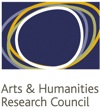|
|
AUGMENTED GAMELAN
Next performance:
Augmented Gamelan set: New River Studios, London, 02/11/2016 |
Recent performances:
CAFe Budapest Festival: Bela Bartok National Concert Hall, Budapest, 10/10/2016 | |
|
The Augmented Gamelan project was developed to explore the boundaries of tradition and establish better methods of integrating gamelan music with electronics, finding ways to share visual and acoustic space.
Javanese gamelan music is based on a system of parts that fit together across many instruments, forming a kind of meshed sonic structure that can be expanded and contracted in time. The augmented ensemble extends this relationship to incorporate electronic sound and light. Devices attached to the instruments turn them into metallic speakers, meaning that they can be shared between human players and a computer. Patterns flicker in and out of focus, engulfed by deep gong tones; rhythms and timbre are stretched out to reveal hidden sound worlds, all interspersed with traditional songs about love and death. Members of the ensemble play traditional gamelan as part of Southbank Gamelan players, Siswa Sukra, and the Cambridge Gamelan, as well as contemporary music projects including Eternity Bleeps and the Gamelan Composers Forum. The Augmented Gamelan instruments and electronics are developed by Charles Matthews, who has previously recorded acid and experimental electronica as Ardisson on Seed Records. More information on our various projects - including new instruments, interactive installations, and computer-aided composition software - is available on our blog. |

| This project was developed at the ADRI, Middlesex University with funding from the Arts and Humanities Research Council (AHRC). |   |